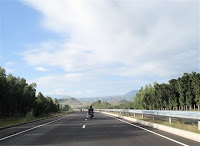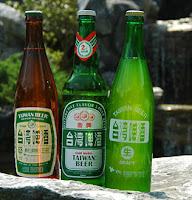 Booz & Company conducted a study (survey under 108 foreign invested manufacturing companies) together with the American Chamber of Commerce in Shanghai to see what the influence is of the economic crisis on their commitment of doing business in China.
Booz & Company conducted a study (survey under 108 foreign invested manufacturing companies) together with the American Chamber of Commerce in Shanghai to see what the influence is of the economic crisis on their commitment of doing business in China.
IP Dragon tweets
Sorry, no Tweets were found.
IP Dragon editor
Publications Danny Friedmann
IP Dragon quoted in the media
- South China Morning Post
- InsideCounsel, Feb 1, 2012
- US ITC: China: Effects of Intellectual Property Infringement and Indigenous Innovation Policies on the U.S. Economy, May 2011
- Advertising Age, Oct 21, 2010
- Wall Street Journal, March 4, 2009
- Wall Street Journal, Oct 7, 2008
- Wall Street Journal, Sept 11, 2008
- Reuters June 5, 2008
- France24, July 7, 2009
- Popular Science, July 8, 2007
- Asia Sentinel, May 28, 2007
- Wanfang Data, affiliate of China's Ministry of Science & Technology), Sept 11, 2008
- World Trademark Review, December 6, 2010
- World Trademark Review, April/May 2010
- World Trademark Review, June 9, 2009
- World Trademark Review, March 13, 2009
- World Trademark Review, January 29, 2009
- World Trademark Review, January 15, 2009
- EUROCHAMBRES Understanding China, July 7, 2010
- Global Resources, November 19, 2010
IP Dragon cited in scholarly papers
- Andrea Wechsler, China’s WTO Accession Revisited: Achievements and Challenges in Chinese Intellectual Property Law Reform (March 3, 2011). European Yearbook of Int'l Econ. L., Max Planck Institute for IP & Competition Law Research Paper No. 11-03, 2011
- Jesse London, China's Approaches to Intellectual Property Infringement on the Internet, 38 Rugers Law Record 2010-2011
- Anders Dalsgaard, Protection of IP in PRC: Is it really as bad as it looks? Aarhus University Denmark, May 2011
- Demian Stauber, Zhongqi Zhou, 10 U.C. Davis Bus. L.J. 207 (2010)
- Geertje Hesselink, Intellectual Property rights in fashion in China and the knowledge of young Chinese designer on this topic,Master Thesis Cultural Economics & Cultural Entrepreneurship, 2010
- Sarah A. Baird, Contentious Issues: Copyright Reform in the Age of Digital Technologies, December 2009
- Marcus Meyer, Marken- und Productpiraterie in der VR China: Eine umfassende Darstellung des zur Verfugung stehenden Rechtsschutzes, Igel Verlag, 2008, p 80
- Donald Harris, The Honeymoon is Over: Evaluating the United States' WTO Intellectual Property Complaint Against China, Fordham International Law Journal, Vol. 32, 2009; Temple University Legal Studies Research Paper No. 2008-76
- J.M. Duncan, M.A. Sherwood, Yuanlin Shen, 7 J. Marshall Rev. Intell. Prop. L. 529 (2008)
- Dina Bronshtein, Counterfeit Pharmaceuticals in China: Could Changes Bring Stronger Protection For IPR and Human Health? 17 Pacific Rim Law and Policy Journal 439, 2008
- Sampsung Xiaoxiang Shi, Chinese Copyright Law, Peer Production And The Participatory Media Age: An Old Regime In A New World, Sydney U. Press, 2008
- M.J. Simburg, 42 Int'l Law. 467 (2008)
- P. Dervan, Journal of High Technology Law, Suffolk U. Law School, 2008
- Terence Stewart, Elizabeth Argenti, Philip Butler, The Crisis in IP Protection And China's Role in that Crisis, USCC Research Paper, May 2007
- Paul Jones, China - Judicial and Legislative Update 2005-2006, 4 International Journal for Franchising Law 11, 2006
Speaking Engagements
- China's influence on non-trade concerns on international economic law, Maastricht University, 19 and 20 January 2012
- 3rd Global Forum on Intellectual Property, Raffles City Convention Centre, Singapore 6 and 7 January 2011
- 7th Annual Asia-Pacific IP Forum 2010, Speaker on Social Networks and Trademarks, Sheraton Tsimshatsui, Hong Kong, September 1, 2010
- Lunch presentation at Baker & McKenzie's Hong Kong office with video link to Baker's Shanghai and Beijing office, 'Is China's Unique Patent Law Paving the Way for Innovation?', 5 August 2010
- 2nd Annual IPR seminar Speaker and panelist at 'Managing IPR as a Business Asset in China', China IPR SME Helpdesk, European Chamber of Commerce, Hong Kong Convention & Exhibition Centre, 25 June 2010
- Key Note Speaker Intellectual Property in China and the Netherlands, Rotterdam, 28 May 2008
SHENZHEN TIME
IPR in China Laws and Regulations
- Copyright Law Implementation PR of China 2002
- Copyright Law, Amended PR of China 2001
- Copyright Law Implementation PR of China 1991
- Provisions on the Implementation of International Copyright Conventions 1992
- Copyright Law PR of China 1990
- Copyright Collective Management Regulations PR of China 2004
- Copyright Administrative Punishment Implementation Rules 2009
- Trademark Law Implemention PR of China 2002
- Regulations on the Protection of the Right of Communication through Information Network PR of China 2006
- Measures for the Administrative Protection of Internet Copyright 2005
- Trademark Law PR of China 2001
- Trademark Law PR of China 1993
- Collective/Certification Marks 2003
- Collective/Certification Marks 1994
- Trademark Provisions on Claims for Priority 1985
- Well-known-trademarks Recognition/Protection 2003
- Implementation Madrid Agreement 2003
- TRAB Rules 2002
- Tort Liability Law 2009
- Product Quality Law 2000
- Punishment of the Crime of Fake or Substandard Commodities PR of China 1993 invalid
- Measures for the Administration of GI of Agricultural Products 2008
- Geographical Indication Products Protection PR of China 2005
- Administrative Measures Safety of Places of Origin of Agricultural Products 2006
- Implementing Regulations on Patent Law 2010
- Regulation on National Defense Patent 2004
- Standard for Application Patent Number 2003
- Opinion of the MOFTEC/SIPO on Strengthening Administration of Patents in Foreign Trade 2003
- Measures for Administrative Enforcement of Patent 2001
- Patent Law Implementation PR of China 2001
- Decision of the Standing Committee of NPC on Amendmend of Patent Law 2008
- Transitional Measures on Implementation of Amended Patent Law 2009
- Patent Law PR of China 2008
- Guidelines for Examination 2006
- Patent Law PR of China 2000
- Patent Law PR of China 1992
- Patent Law Implementing Regulations 1992
- Patent Law PR of China 1984
- Protection Measures for Intellectual Property Rights during Exhibitions PR of China 2006
- Science and Technology Progress Law PR of China 1993
- Anti-unfair Competition Law 1993
- Regulations of PR of China on Awards for Inventions 1978
- Regulations on the Protection of Types of Traditional Chinese Medicine (1993)
- Civil Law General Principles PR of China
- Civil Procedure Law PR of China
- Administrative Procedure Law 1989
- Software Protection Regulations PR of China 2002
- Administrative Procedure Law PR of China
- Customs Penalty Regulations PR of China 2004
- Customs Implementation Regulations PR of China 2004
- Customs Regulations PR of China 2003
- Customs Regulations PR of China 1995
- Customs Law PR of China 2001
- Criminal Law PR of China
- Criminal Procedure Law PR of China
- Unfair Competition Law PR of China 1993
- Anti Monopoly Law PR of China 2007
- Layout Design IC Regulations PR of China 2001
- Layout Design IC Implementation PR of China 2001
- Olympic Logo Regulations PR of China 2002
- Regulation on Radio and Television PR of China 1997
- Property Rights Law PR of China
- Constitution PR of China
- Legislation Law PR of China
- National IP Strategy PR of China 2008
- Action Plan PR of China 2008
- Action Plan PR of China 2007
- Action Plan PR of China 2006
- Action Plan PR of China 1995
- Foreign Trade Law PR of China 2004
- Foreign Trade Law PR of China 1994
- Regulations on the Protection of Types of Traditional Chinese Medicine (1993)
- Law on Guarding State Secrets 1988
Patent Law and Regulations in China
Judicial Interpretations by Supreme People’s Court and/or Supreme People’s Procuratorate
- Patent Civil Dispute Interpretation
- Trademark Civil Dispute Interpretation
- Copyright Civil Dispute Interpretation 2002
- Application of law to trial of cases over copyright disputes on networks 2004
- Adjudication/application of law to cases of copyright disputes on networks 2000
- Regulations on Protection of the Right to Network Dissemination of Information 2006
- Patent Law Pre-trial Cessation
- Trademarks Pre-trial Suspension Evidence Preservation
- Criminal Thresholds 2007 (Draft)
- Criminal Thresholds 2004
IPR Relevant Treaties in force in China
- WIPO Copyright Treaty (2007)
- WIPO Performances and Phonograms Treaty (2007)
- WIPO Singapore Treaty (signature 2007)
- UNESCO Convention on Diversity of Cultural Expression (2007)
- WTO TRIPs (2001)
- Working Party Report on the Accession of China (2001)
- WTO Dispute Settlement Understanding (2001)
- WTO Acession Protocol (2001)
- WIPO UPOV Convention (1999)
- UN Vienna Treaty Convention (1997)
- WIPO Strasbourg Agreement IPC June (1997)
- WIPO Locarno Agreement (1996)
- Sino-US IPR MOU Action Plan for Effective Protection/Enforcement 1995
- WIPO Madrid Protocol (1995)
- WIPO Budapest Treaty (1995)
- Agreement Establishing the WTO (1995)
- Patent Cooperation Treaty (1994)
- WIPO Nice Agreement (1994)
- WIPO Trademark Law Treaty (signature 1994)
- WIPO Patent Cooperation Treaty (1994)
- WIPO Convention for the Protection of Producers of Phonograms against Unauthorized Duplication of their Phonograms (1993)
- WIPO Phonograms Convention (1993)
- Sino-US IPR Memorandum of Understanding 1992
- WIPO Berne Convention (1992)
- UNESCO Universal Copyright Convention (1992)
- WIPO Washington Treaty (signature 1990)
- WIPO Madrid Agreement (Marks) (1989)
- WIPO Paris Convention (1985)
- WIPO Establishing Convention 1980
- Costa Rica - China FTA (2011)
- New Zealand-China FTA (2008)
- Pakistan-China FTA (2006)
- China-Chile FTA (2005)
China’s IP Related Authorities
Hong Kong’s IP Ordinances
- Copyright (Suspension of Amendments) Ordinance 2001
- Copyright Ordinance
- Director of Intellectual Property (Establishment) Ordinance
- Layout-design (Topography) of Integrated Circuits Ordinance
- Organized and Serious Crime Ordinance
- Patents Ordinance
- Plant Varieties Protection Ordinance
- Prevention of Copyright Piracy Ordinance
- Registered Designs Ordinance
- Trade Descriptions Ordinance
- Trade Marks Ordinance
- Basic Law 1997
International Treaties Applicable to Hong Kong
Hong Kong’s IP authority
Macau’s IP Laws
Macau’s IP authority
Taiwan’s IP Laws
Taiwan’s IP Related Authority
IP Faculties and Research Institutes
- Berkman Center for Internet and Society
- Boston University IP
- Cardozo Intellectual Property and Information Center
- Centre d'Études Internationales de la Propriété Intellectuelle
- Dean Dinwoodey Center for Intellectual Property
- East China University of Politics and Law Shanghai
- Engelberg Center on Innovation Law and Policy
- Franklin Pierce Center of Intellectual Property
- High Tech Law Institute
- Institute for Information Law Amsterdam (IViR)
- Institute for IP and Information Law (U of Houston)
- IP Academy Singapore
- Kernochan Center for Law Media and the Arts
- Max Planck Institute of Intellectual Property Competition and Tax Law
- McGill Centre for Intellectual Property Policy Montreal
- Renmin University of China School of Law Beijing
- Samuelson Law, Technology and Public Policy Clinic
- Stanford Center for Internet and Society
Chinese blogs/sites/committees about IP in China
- Andrew C. Mertha
- BioIPR-COM
- Blawg Dog
- China IPR Law
- Danwei
- Intellectual Property in China 知识产权与中国发展
- Intellectual Property Rights Protection Alliance
- IP Menu
- IP Webcasting Hong Kong
- IP.People.com.cn
- IPR.gov.cn
- More blogs about IP in China
- Patent Agent in Hong Kong
- Peter K. Yu
- Quality Brands Protection Committee
- Southern Perspective Shenzhen
China Blogs
- All Roads Lead To China
- Asia Business Intelligence
- China and International Law
- China Business Law Blog 中國商法博客
- China Challenges
- China Economics Blog
- China Esquire
- China Hearsay
- China Herald
- China Journal Wall Street Journal
- China Law Blog
- Chinese Law Working Group
- Emerging Capital
- Experience not logic
- International Economic Law and Policy Blog
- Little Red Book
- Modern Asian History: Myths and Realities
- PanAsianBiz
- The China Game
- This is China! Blog
- Uculture
- WTO and China
- 中外对话 China Dialogue
IP Blogs
- Afro-IP
- Boek 9 (Dutch)
- CIPP McGill Blog
- Class 46
- Counterfeit Chic
- Intellectual Property Watch
- Invisible Gold in China
- IP Finance
- IP Kat
- IP Tango
- Ipeg
- IPR Transatlantic Collaboration
- nipc IP/it Update
- No to Fakes
- Philip Brooks'Patent Infringement Updates
- Professor Justin Hughes
- Small Business IP Protection and Management
- SPC Blog
- The Counterfeit Blog
- The Fire of Genius
- The Gray Blog
- The Trademark Blog
- Transnational Law Blog
- Vox PI
Blog Archive
IPR Holders Representatives/Anti-piracy/-counterfeiting
- ABAC-BAAN
- ACG
- AGMA
- AIM
- AIPPI
- All-China Patent Agents Association
- Alliance against IP theft
- APM
- ARCC
- Auteursrecht
- BASCAP
- BIG Web
- BPG
- Brand Protection Alliance
- BREIN
- British brands group
- BSA
- CAAST
- Coalition Against Counterfeiting and Piracy
- Coalition for intellectual property rights
- Danish Anti-Counterfeiting Group (Danish)
- ECAP II
- ECTA
- FACG
- FACT
- FAST
- Filmwereld
- IACC
- ICC Commercial Crime Service
- IDSA
- IFPI
- IIPA
- INDICAM
- Innovation Alliance
- IP Federation
- IP Institute
- IPOS
- IPR Helpdesk
- IRMA
- Marques
- MPA
- MPAA
- NACG (Norwegian)
- NMPA
- No to fakes
- Pro-Music
- RIAA
- SABAM
- SACG
- SIIA
- SNB-REACT
- Stop Fakes
- The Industry Trust
- Trade Marks Patents and Designs Federation
- Union des Fabricants
- World Cinema Alliance
Tags
- Apple
- Baidu
- Beijing No. 1 Intermediate People's Court
- brand
- BSA
- China
- China Daily
- China Hearsay
- copyright
- copyright infringement
- Copyright Law
- copyright piracy
- counterfeit
- counterfeit trademark
- customs
- EU
- geographical indications
- Hong Kong
- Huawei
- innovation
- intellectual property in China
- IP Dragon
- Japan
- Louis Vuitton
- Microsoft
- patent
- patent infringement
- patent law
- patents
- professor David Llewelyn
- SAIC
- Shenzhen
- Singapore
- SIPO
- statistics
- Supreme People's Court
- Taiwan
- trademark
- trademark infringement
- Trademark Law
- TRIPs
- WIPO
- WTO
- WTO Dispute Settlement
- No tweets available at the moment.





























 IP Dragon
IP Dragon














